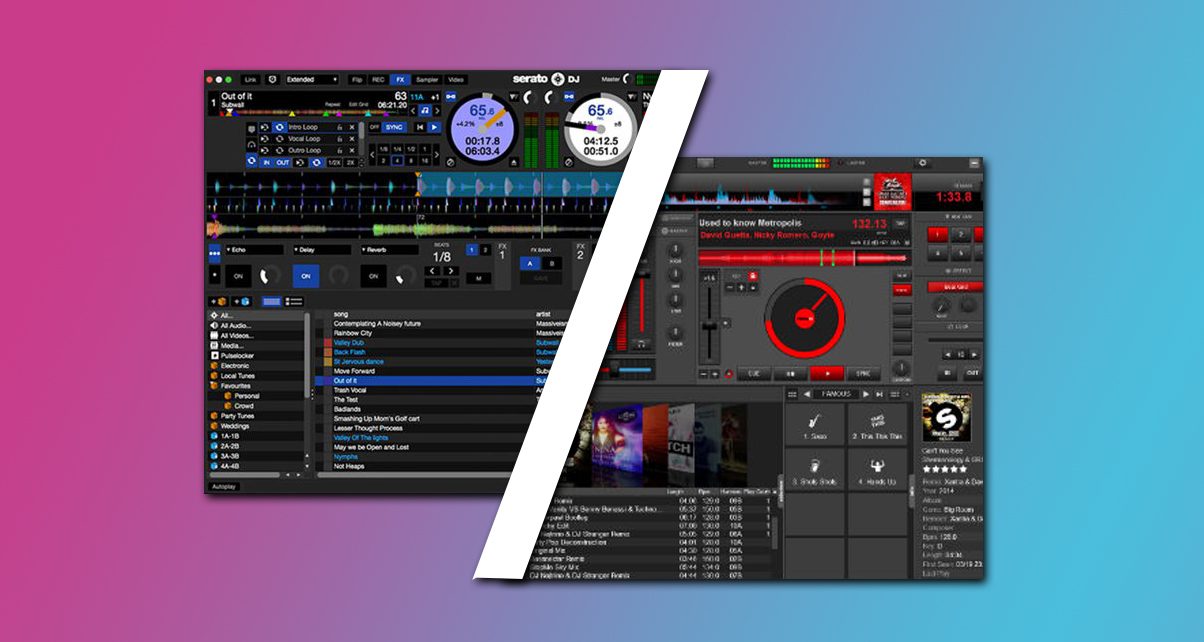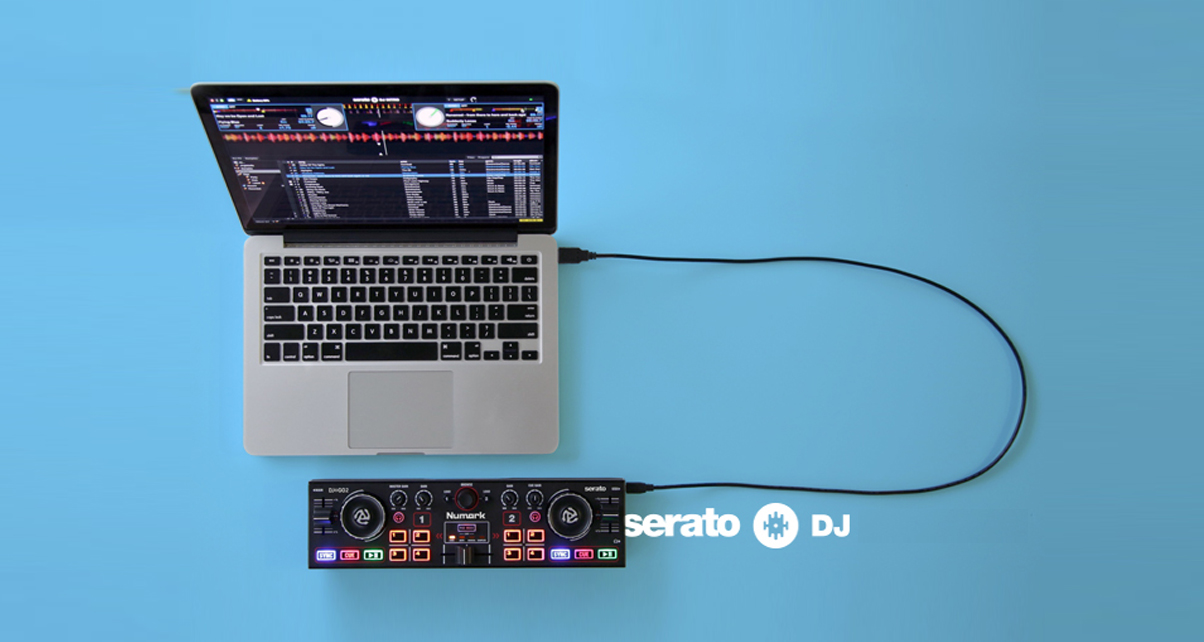
By: Joe Moore/digitaldjtips.com
For many years now, my primary DJ software has been Serato DJ (now known as Serato DJ Pro). I’ve tried and tested several of the other top-tier DJ platforms, but somehow Atomix’s Virtual DJ software was one that slipped under the radar. Well better late than never – time to compare Serato DJ Pro and Virtual DJ 2018.
1. User interface
Both Serato DJ Pro and Virtual DJ have the traditional layout of virtual decks on the top, and the music collection on the bottom. Both programs’ interfaces are well organised, but I find Serato’s to look a little cleaner and more modern, while Virtual DJ’s could use a refresh, in my opinion. You can download custom skins to personalise Virtual DJ’s look and feel, but many adopt the kind of skeuomorphism that has since gone by the wayside in modern software.
Serato lets you mix up to four decks of music, while Virtual DJ supports up to six decks. Both can mix with or without DJ hardware connected (you’ll need to buy the Serato Play expansion pack to access this), and have similar basic features such as cue points, loops, sync, FX, sampler, and set recording. Scrolling waveforms allow for visual mixing in both programs, and audio output quality with both is excellent.
In the music library section, DJs can organise their tracks into crates in Serato DJ Pro, or virtual folders in Virtual DJ. Smart crates/folders automatically fill a crate with any track in the library that meets the criteria you set.
Virtual DJ has a separate window to edit track tag information, which is helpful. It also has star ratings and play counts for tracks, something that Serato users have long been asking for. However, Serato’s crate structure is a little easier to use, with a parent crate being able to show all tracks inside its subcrates (Virtual DJ requires recursing, which can be tedious).
Both platforms have adopted music streaming via a SoundCloud Go+ subscription (and in Serato’s case, TIDAL too).
http://ghanadjawards.org/soundcloud-adds-native-instruments-and-mixvibes-dj-software-integrations/
2. Hardware compatibility
Looking at hardware compatibility, Serato DJ Pro has a long list of supported mixers, media players, controllers, and accessories. However, Virtual DJ’s hardware support extends even further – including devices built for Serato. For example, a Pioneer DJM-S9 mixer, which is designed to plug-and-play with Serato DJ, will also connect to Virtual DJ, and can be custom mapped to the DJ’s liking in either program.
DVS support is available in both Serato DJ and Virtual DJ, though this requires a DVS expansion pack purchase in Serato. And yes, Virtual DJ can read Serato timecode records and CDs, as well as timecode signals from most other DJ programs. DVS support is available in both Serato DJ and Virtual DJ, though this requires a DVS expansion pack purchase in Serato. And yes, Virtual DJ can read Serato timecode records and CDs, as well as timecode signals from most other DJ programs.
http://ghanadjawards.org/top-10-songs-by-lucky-dube-you-should-know-as-a-dj/
3. Video mixing
Here, Virtual DJ has a few advantages over Serato Video. For one, it’s included without an extra purchase of an expansion pack. It has several video effects that are absent in Serato Video, like using a live camera feed or a Shader visualiser that reacts to audio tracks when a video is not available. In addition to the downloadable video skins for some extra flair in your video output, Virtual DJ can also broadcast a video mix live via Facebook, YouTube, Periscope, or Twitch.
One great feature in Serato Video is the Media crate, which will load a video track when playing an audio-only track, so there is always video on your output.
Both programs give you a number of video transitions to use, as well as delay compensation to keep your audio and video output in sync.
4. Settings
The settings are better organised and easier to use in Serato DJ Pro. Though you may get more options to customise in Virtual DJ, it’s a long list that can be difficult to navigate through. There is a search bar to help narrow down the option you’re looking for, but I think this area could use some revamping.
5. Pricing
The pricing for these two platforms isn’t too far apart. A Serato DJ Pro licence costs $129, or $9.99 a month if you opt for the subscription plan. Expansion packs are available for purchase to unlock features such as DVS support, video mixing, extra FX, laptop-only DJing, and more. The full suite of Serato features costs $299, or a monthly fee of $15.
Virtual DJ’s Pro licence costs $299, or $19 a month, and it includes all features. You will need a Pro license to use DJ hardware, such as a controller or mixer, with Virtual DJ.
Serato DJs should also know that some hardware doesn’t require the purchase of a Pro licence, and Serato’s website has an up-to-date list of Pro-ready hardware.
Both Serato DJ Pro and Virtual DJ are 64-bit applications that can be used on PC or Mac computers. In my testing of both programs on my MacBook Pro, I’ve had no issues with stability or performance.
Finally…
As a long-time Serato DJ user, I was surprised and impressed with how powerful Virtual DJ is. Clearly the team at Atomix has put a lot of energy into innovating and responding to its users’ feature requests, and the result is a DJ program that can do just about anything.
I’m satisfied with the features offered by Serato, but also intrigued by some of the unique things that Virtual DJ can do. Whether it’s DMX lighting control, taking requests from the audience via a trackable Twitter hashtag, broadcasting a live mix to the Internet, or the wide range of performance pad options, it’s no surprise that Virtual DJ is an appealing DJing solution to a lot of DJs out there.
Which DJ software do you use? Have you tried them both? Let us know in the comments below.







Comment here